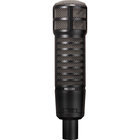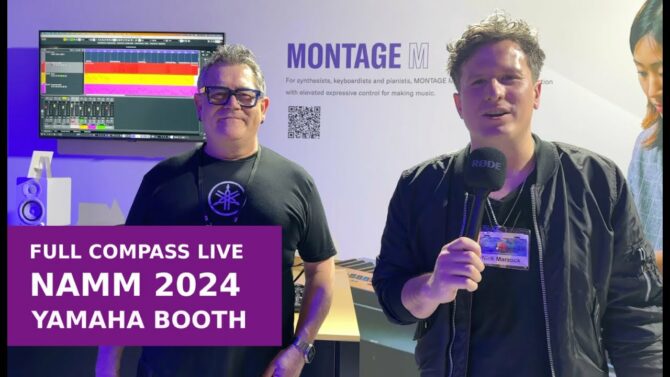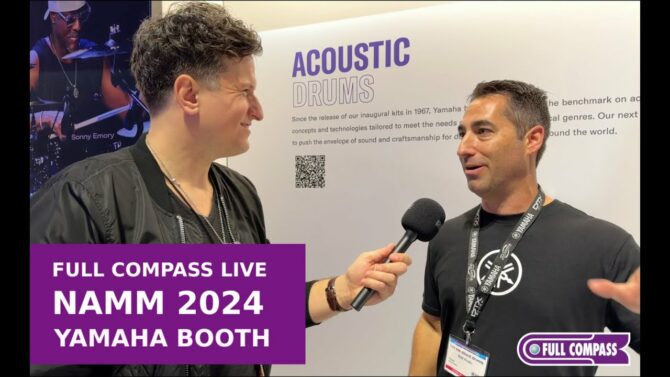For laying down the low end, these amps deliver clean power in a compact bass amp/cab.
Electric bass is always arguing with the laws of physics...and that doesn’t make life any easier for bass amps. The lowest 4-string bass note is around 41 Hz Definition:
Definition:
Abbreviation for Hertz. Unit of measurement for frequency, formerly called CPS (Cycles Per Second), that measures periodic waves, audio and radio frequencies, and mechanical repetitive motion. Example: 1000 Hz means a periodic waveform has 1000 cycles/vibrations per second., which reaches the limits of not only speaker technology but human hearing—the ear’s low-frequency response Definition:
Definition:
The range of frequencies that an audio, video or data device can pass. drops off dramatically at lower volume levels. Designing a bass amp Definition:
Definition:
Abbreviation for either Ampere or Amplifier. that can pump out the lows is difficult enough, but Phil Jones Bass (PJB) has managed to do so with the Session 77—a compact model (17" x 11" x 12.5") that weighs around 28 pounds (Fig. 1). The other bass amp we’ll be reviewing, the Suitcase Combo Amp, ups the weight (40 pounds), wattage power, expandability, and price, but still retains portability.

If you’re skeptical that amps and cabinets this small can actually do the job for bass, join the club—so was I. But plugging in ended any skepticism. I could see these amps working especially well in smaller venues and House of Worship applications, because the small size is unobtrusive and the clean sound fills out the low end in a consistent, articulated way. However, the Session 77 is also a stellar choice for studio work. Given its affordability, portability, and suitability for a wide variety of applications, let’s look at it first.
The Session 77 Control Complement
The controls for the single channel Definition:
Definition:
1. In radio, television, citizen's band radio, and other wireless communications modes, a specific frequency for communication. 2. In mixers and video, an input or output signal path with controls. 3. In MIDI, one of 16 data paths. are what you need—no more, no less. The ¼" unbalanced Definition:
Definition:
A two-conductor signal connection where one wire connects to ground. Unbalanced connections are prone to ground loop hum if equipment is not in close proximity. input goes through a mute/low/high gain Definition:
Definition:
The amount of amplification provided by an amplifier circuit, expressed in dB or numerically as in "3X" = "3 times". toggle switch (with clip indicator), input level control, bass/mid/treble tone stack (±18 dB Definition:
Definition:
1. A deciBel is a logarithmic ratio between two quantities, and is a nonlinear measurement that mimics human perception. 2. A unit expressing sound levels relative to a nominal level just audible by the average human ear, and equal to 1/10th of a Bel. 3. (slang) Database. for each of the three controls), and master volume. There’s also a 1/8" Definition:
Definition:
3.5mm mini phone connector, which is sometimes referred to by the close non-metric 1/8 inch dimension. Aux input with associated level control (ideal for playing along with other sound sources or backing tracks), and a headphone output for practicing or monitoring (Fig. 2).
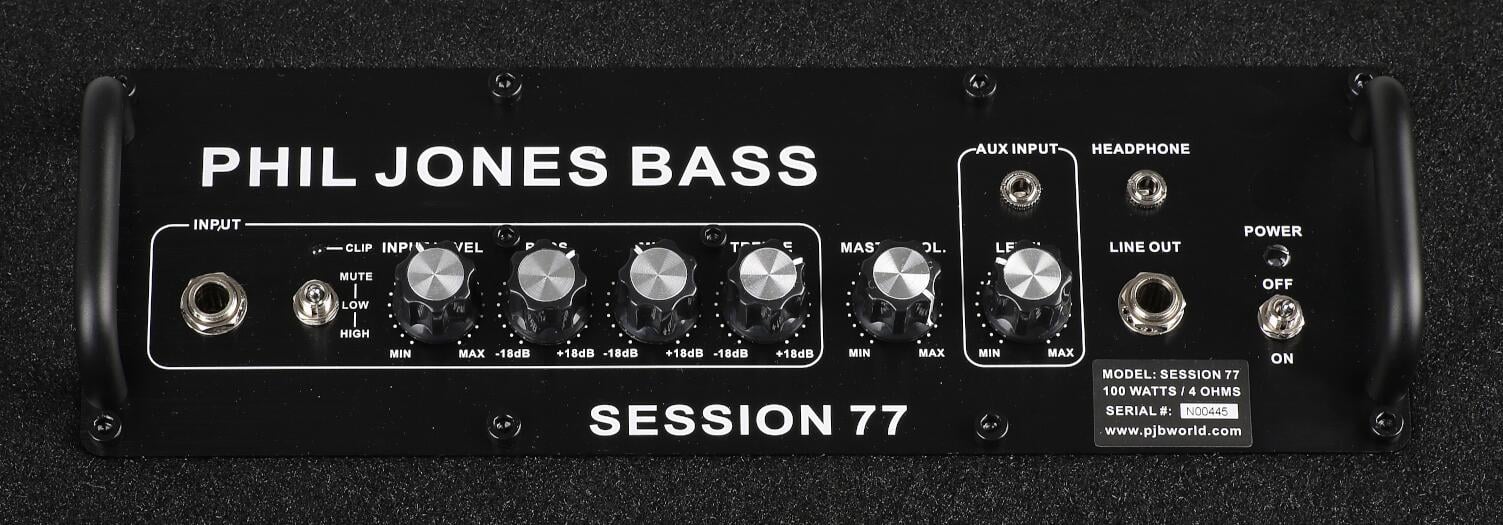
The enclosure itself is rugged, with a curved metal grille on the front, and a handle on the top. Two small bars to the left and right of the controls protect the knobs and switches in case the amp is dropped, or rolled over. The amp is a 100 Watt Definition:
Definition:
Abbreviated W. Amount of electrical energy, derived by multiplying Volts (voltage) times Amps (current)., Class D amp. Digital Definition:
Definition:
A signal or data expressed as series of the digits 0 and 1, typically represented by values of a physical quantity such as voltage or magnetic polarization. amplifier Definition:
Definition:
1. A device that increases the voltage or power of a signal. 2. In music performance, a device such as a guitar amplifier that includes speakers and controls to increase the sound level of acoustic or electric instruments. technology contributes to the clean sound but also improves reliability because this type of amp runs cooler, and more efficiently than an analog Definition:
Definition:
A signal that is continuous in nature, as opposed to being defined as a series of discrete numbers (or elements) as found in digital signals; electrically "analogous" to an acoustical signal in the air. amp running at comparable power levels. And speaking of clean, apparently, the amp is designed with a considerable amount of headroom Definition:
Definition:
1. The safety margin for an electronic signal that accommodates peak signals without overload. It is the difference (in dB) between normal operating levels (0-VU) and the clipping (overload) point. 2. The space between a subjects head or top and the top edge of a screen frame.. With a Fender Mustang bass, I couldn’t illuminate the clip indicator no matter Definition:
Definition:
Matter is a connectivity standard for IoT smart home devices from the Connectivity Standards Alliance (formally Zigbee). how hard I slapped or pulled the strings.
This standard includes devices from Google, Apple, Philips, Amazon, Samsung and many more.
Underlying technologies include Ethernet, WiFi and Thread.
Tone Talk
PJB amps are about a clean, well-articulated, modern sound. You can turn the bass tone control up full to push the amp; it growls surprisingly well, and the growl goes away smoothly as the string decays. However, this negates one of the main values of the Session 77, which is the defined, clear sound quality. If you want “growl & grit,” a smarter option is an overdrive Definition:
Definition:
A musical effect caused by overloading an amplifier or speaker, which creates intentional distortion. or saturation Definition:
Definition:
1. (audio) The result of overloading a transformer, tape, speaker, amplifier, or tube to add harmonics, which can sometimes create a desirable effect. See Soft Clipping. 2. (color) Amount of color present in a light, fabric or paint. pedal prior to the amp input.
The Session 77 has two 7" low-frequency Definition:
Definition:
A value, expressed in Hertz, that indicates how many cycles of a periodic signal occur in one second. drivers and a 3" high-frequency driver Definition:
Definition:
A system software routine that provides a means of communication between a computer and an associated peripheral (audio interface, hardware controller. etc.). Drivers are updated often for improved efficiency, or compatibility with newer operating systems., which reproduces highs with ease and contributes a lot to the clean sound. However, this is also a big advantage in the studio, because you can move your mic around to pick up more or less of the high-frequency driver. Better yet, you can dedicate one mic (e.g., a condenser Definition:
Definition:
An archaic term for Capacitor. mic like the Audio-Technica AT-2020) to the 3" driver, and a second mic to pick up one of the 7" speakers—either close-miked to “weight” the sound toward one of the speaker cones’ edge (warmer sound) or center (brighter sound), further back for more of a composite sound, or somewhere between the two speakers to experiment with a balance. For close-miking Definition:
Definition:
Typically placing a microphone less than a foot from the sound source., you can take advantage of the proximity effect Definition:
Definition:
A phenomenon where most microphones with cardioid or figure-8 polar patterns exaggerate bass frequencies as the sound source moves closer to the microphone. Also called Bass Tip-Up. with a common dynamic mic like the SM57. For extra bass without needing the proximity effect, or for recording at more of a distance, the Electro-Voice RE-320 dynamic mic has a kick drum mode that takes the quoted response down to 30 Hz.
Another advantage for studio use is the low noise level, which is another reason the amp is so well-suited to close-miking techniques. Sure, it’s easy to stick a mic in front of a speaker and play around with EQ to get the tone you want. But changing tone through proper mic placement offers a wider variety of sonic seasonings, due to the subtle phase Definition:
Definition:
Sound waves are variations in air pressure that, like water waves, have peaks and troughs. Phase is the waveform's position in its current cycle. For example, if two versions of the same waveform are both at their peak, or at their trough, they're considered in phase. If one is at its peak and one is at its trough, they are considered out of phase. If one is at its peak and the other is at zero (between the peak and trough), then the two waveforms are 90 degrees out of phase. See also: Polarity and frequency response changes. Note that while there’s no DI Definition:
Definition:
DI (Direct Injection): Also called Direct Instrument. A method of connecting a sound source, such as an electric or electronic instrument, directly to a recording or mixing device without a microphone. output per se, there is a line output Definition:
Definition:
In audio, an output with a nominal level of -10 to +4 dBm that can drive loads from 600-20K ohms. from the preamp. This provides a feed for another amp, FX Definition:
Definition:
(Effects): Abbreviation for "effects," e.g., "special FX" or "FX chain." pedals, feeding into a mixer Definition:
Definition:
Combiner, controller, and router for multiple audio or video signals., and the like, or blending with the miked sound.
Live and Let Live
In addition to its usefulness in the studio, the Session 77 is equally relevant to live Definition:
Definition:
Live broadcast of an event or program without substantial delay or editing. performance. An amp this small isn’t going to trigger Definition:
Definition:
A signal that starts an event. earthquakes, but for a venue like a restaurant, smaller club, or House of Worship—especially with more acoustic-oriented acts—this amp delivers enough power to fill a room. I could easily see a guitar player/singer with something like a Bose S1 being accompanied by a percussionist; the bassist wouldn’t need anything other than the Session 77. However, I also tested the Session 77 with electric keyboards. It gives a good account of itself because of the 3" high-frequency driver, and the extended bass that keyboards don’t have with guitar amps. (If Phil Jones Bass wanted to extend their product line, I think keyboard amps would be the place to go.)
Due to the small size, the amp can fit just about anywhere—which means you can stick it on the floor, in a corner. In this situation, the gently curved front panel is great, because it points the highs (which are more directional than bass) outward, instead of at the floor. But this kind of placement also boosts the bass acoustically, which makes the sound much bigger than what you’d hear from raising the amp up and placing it away from a wall. On the other hand, in the studio, I prefer placing the Session 77 on a chair or table so that the mics pick up only the bass sound, as opposed to a mix of direct and reflected sounds.
Overall, the Session 77 is an impressive little sucker. And I do mean little—it delivers a lot of lows, given the compact size. It’s one of those “hearing is believing” kind of products.
The Suitcase Compact Combo
When you need to push out more power, the 300-Watt Suitcase Compact Combo amp does the job with four 5" speakers, yet still retains a compact size (14.2" x 12.4" x 13.4") in a ported cabinet (Fig. 3).
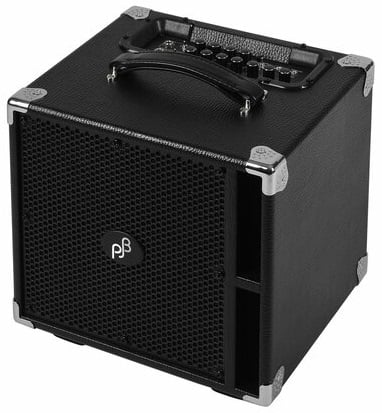
The set of controls is similar to the Session 77, but there are two input channels, both with the same control set as the Session 77 (input jack Definition:
Definition:
A connector, normally female, that works in conjunction wit a plug. Usually located in a piece of equipment, or as part of a cable., gain switch, clip indicator, input level, and tone stack). The master volume control affects both channels, and there’s still the headphone out and 1/8" aux-in jack with level control. However, a major difference is a limiter Definition:
Definition:
A form of compressor with a ratio of infinity:1 above the threshold for both overload protection, or as a sound effect to normalize volume. Some engineers consider a compressor with a ratio of 20:1 or higher above the threshold for a limiter. on the master output, with an associated control to set the amount of limiting, and limiter bypass Definition:
Definition:
A circuit that circumvents or defeats a process. The bypass can be electronic, or hard-wired with a mechanical switch. switch. The limiter is very effective because it’s designed for bass—you don’t get the same kind of pumping Definition:
Definition:
A change in background sound, hiss, or "room noise," caused by the tendency for automatic level control systems and audio dynamic range compression to audibly vary background or system noise. See also: Breathing. you’ll hear with other limiters that aren’t specifically designed to handle low frequencies. Overall, the noise level is a little higher than the Session 77, but it’s certainly not problematic for live use and makes no practical difference in the studio if you back off the mics a little bit.
Another main difference is the amp’s rear panel, which has an XLR-connector DI out. You’ll also find ¼" jacks for tuner output, FX loop Definition:
Definition:
1. To re-record dialog over video. See: ADR. 2. To replay a portion of audio or video content. 3. (sampling) To repeat a section of a waveform so that it can sustain indefinitely. 4. To repeat a phrase or section of sound multiple times within a composition or recording. (send and receive), and preamp out, along with a ground Definition:
Definition:
A common zero-volt potential connection, commonly used for both electrical noise control and safety, and usually connected to the ground of the earth through a spike, plumbing, or electrical wiring that leads eventually to an earth connection. AKA: Earth. lift. However, arguably the most important addition is a locking Speakon speaker connector for when you want to stack an additional cab (Fig. 4).

The Phil Jones Bass Compact 4 is the ideal complement, because it has the same size and look (it’s also ported), so you end up with a true bass amp stack. Connecting this also lowers the combined speaker impedance Definition:
Definition:
Also abbreviated as Z. The resistance to AC current flow, measured in ohms (similar to, but not necessarily, the same as DC resistance). to 4 ohms, which allows pulling up to 500 Watts from the Compact Combo’s Class D amp. While the C4 is designed to complement the Suitcase Compact Combo, it’s worth noting that this is an excellent extension cab in its own right—no law says you have to use it with Phil Jones Bass amps (Fig. 5).

In use, the Suitcase Compact Combo is indeed louder, and pushes out more bass. It seems well-suited to medium-size venues and could hold its own while entertaining a crowded sports bar. Again, though, as with the Session 77, the sound is clean and distinct. When you push the amp, it gets louder—not muddier.
The Bottom Line
Please forgive the pun, but this is indeed a line intended for the bottom end of the frequency spectrum. The clean sound doesn’t come as much of a surprise, because smaller speakers can more easily reproduce the transients and subtleties that get lost in speakers that need to move more air. What is surprising is how they can pump up the volume in the bass range, but still sound clean and articulated. That’s a tough act to pull off, but then again, that’s the turf Phil Jones Bass has staked out.
For an all-around, affordable bass amp that’s equally at home in the studio or on stage, the Session 77 is the amp of choice. However, if your main application is live performance, although the Suitcase Compact Combo will push your budget further, it will also push your bass further into the venue. The ability to expand to a matching cabinet is also a big plus. For some gigs, you won’t need to bring the additional cabinet but for others, the extra projection and level is worth it.
Some might consider the Phil Jones Bass amps more “boutique,” specialized products, but they’re workhorses whose main claim to fame is definition, clarity, and power that belies the small size. Yes, I was skeptical at first, but now I understand why there are so many glowing online reviews from users. Hmmm...I guess this counts as another one.





